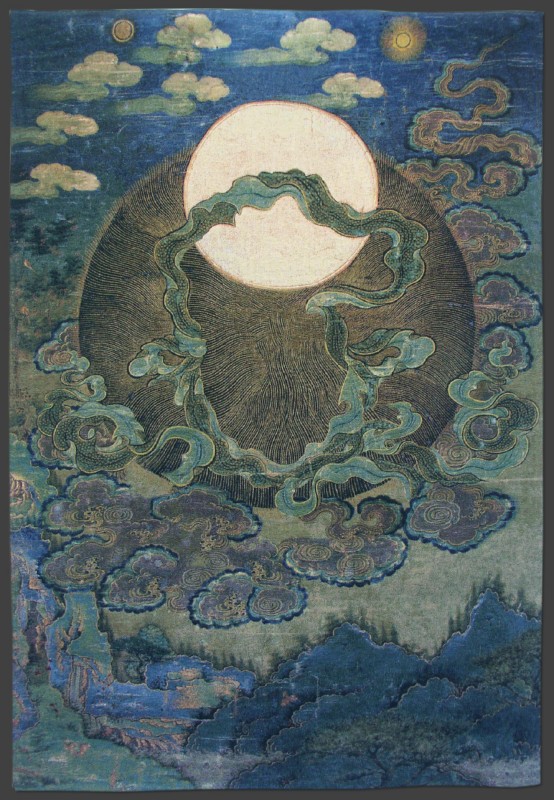
Jacquard tapestry
St. I: 82 x 54 in.; St. II: 116 x 79 in.
St. I: edition of 36; St. II: edition of 3
Dharmakaya, literally “truth body” or “reality body” in Sanskrit, denotes one of the divine bodies of Buddha. It refers to the Buddha’s absolute nature, a state of supramundane consciousness which pervades everything and has no form. In Dharmakaya, Donald and Era Farnsworth use elements of the Tibetan thangka to explore non-human manifestions of divinity. A thangka is a religious artwork painted on silk, intended as a guide for contemplative experience. Traditionally, thangkas depict various aspects of the Buddhist cosmology, with one featured deity in the center surrounded by attending deities or monks. Dharmakaya, however, excludes any figures represented in their human form, drawing attention instead to what would ordinarily serve as the thangka’s background: stylized representations of the heavens, the earth, the sun and the moon. Their choice to highlight these environmental aspects of the thangka is an extension of the artists’ continued fascination with the inherent beauty of trees and wilderness. By subtracting the usual anthropomorphic figures, the Farnsworths also invite us to consider absence as an expression of divinity: the central deity has disappeared, but his floating robes, halo, and radiated energy remain, suggesting a lingering, ubiquitous holiness.
A portion of the proceeds from the sales of this edition are donated to the Tibet Fund, a nonprofit which preserves the cultural, religious and national identity of the Tibetan people, and through them the Shalu Monastery in exile and the Tibetan Children’s Village, a shelter and school for Tibetan orphans.
show prices
Prices and availability are subject to change without notice.The copyright of all art images belongs to the individual artists and Magnolia Editions, Inc.
©2003-2026 Magnolia Editions, Inc. All rights reserved. contact us
